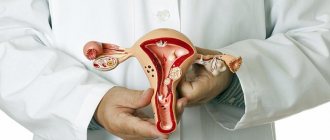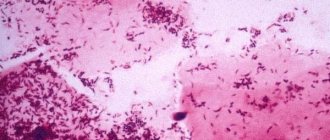Chlamydia is one of the most dangerous and common sexually transmitted diseases, the culprit of which is chlamydia. They are neither viruses nor bacteria. Their main difference is that they can hibernate in the human body and, at the slightest decrease in immunity, intensify their activity.
There are four types of chlamydia:
- Chlamydia trachomatis - affects the urogenital tract, respiratory tract, causes conjunctivitis, inflammation of the cornea, trachoma, etc. This infection is most often transmitted sexually, but intrauterine and domestic infections are no exception.
- Chlamydia psittaci - transmitted by airborne droplets. People into whose body this chlamydia enters may suffer from psittacosis, Reiter's syndrome, felinosis, pneumonia, etc.;
- Chlamydia pneumonie - provokes many respiratory diseases, the symptoms of which are easily confused with various acute respiratory viral infections.
- Chlamydia pecorum - cells of this chlamydia parasitize livestock.
The incubation period of chlamydia lasts about thirty days, so it is not so easy to detect immediately, and the symptoms can be easily confused with other infections of the urogenital tract. This disease affects both men (51%) and women (30–60%).
Clinical picture of chlamydia
From the moment of infection, it takes from 5-7 days to one month.
Depending on the state of the immune system and the presence of concomitant pathologies, in particular the genitourinary area.
In almost 60% of cases, a latent course of the disease is observed, which leads to its chronicity.
Quite often, women visit a gynecologist when the consequences of chronic chlamydia develop (with adhesions or infertility).
In other cases, symptoms in women are mild; patients with an acute onset of the disease are less common.
General information
Chlamydia (another name for the pathology is chlamydia) is one of the most common STDs on the planet. According to statistics, the annual number of primary infections reaches 100 million people, and the total number of infected people, even according to the most conservative estimates, exceeds 1 billion.
The photo below shows a graph reflecting the dynamics of the prevalence of commonly diagnosed STDs in our country. Thus, in the early 90s of the twentieth century, the incidence of chlamydia was 37.1 cases per 100,000 population, and in 2006 it was already 97.2.
In terms of prevalence, the infection is one of the top three among STDs in Russia
Note! Most experts attribute the wide “popularity” of chlamydia, first of all, to its practically asymptomatic course.
The first manifestations of chlamydia
After unprotected sexual intercourse, the first manifestations of an infectious disease in women are the appearance of pathological discharge from the vagina.
At first, the color of the discharge with chlamydia is transparent, and the contents themselves look like mucus.
After some time, they become purulent and yellow in color.
The smell of chlamydia discharge is initially no different from normal discharge.
But in some cases, in women, discharge may be accompanied by a stench, which is often associated with the addition of a secondary infection.
Sometimes the first symptoms are uterine bleeding that is not menstrual.
In this case, there is a feeling of pain in the lower abdomen, and there is discomfort during urination.
Discharge after treatment
Therapy with strong antibiotics, which is prescribed for this infection, usually gives a positive result. However, there are situations when not all affected cells are killed and the activity of pathogenic microorganisms does not subside. You can notice a similar phenomenon if, after treatment of chlamydia, characteristic discharge remains.
They usually appear during or immediately after urination. The first thing to do in this case is to consult your doctor. Repeated examination will allow you to accurately determine the presence of infection in the body. Tests are recommended to be done at the end of therapy: after about a month.
Pathological discharge and other symptoms remaining after treatment may indicate the following phenomena:
- Changes in microflora under the influence of antibiotics - aggressive therapy usually destroys not only pathogenic microorganisms, but also beneficial ones, which are taken into account by the doctor when prescribing drugs, i.e. the specialist additionally prescribes medications that normalize the microflora on the mucous membrane.
- Ineffectiveness - the disease did not respond to treatment with prescribed drugs, the patient may not have completed the therapeutic course completely, or the chosen prescription was drawn up without taking into account the form and nature of the disease in a particular case.
- During the examination, we did not notice the presence of a secondary infection, which continues to affect the body, which affects the appearance of pathological discharge.
- Treatment was prescribed to only one partner - in such a situation the disease simply recurs.
When the course of treatment has been completely completed by both partners, it is recommended to abstain from sexual activity for a month. During this period, women should actively restore the vaginal microflora with the help of specially selected medications and probiotics in order to populate it with beneficial bacteria. The appearance of any alarming symptoms should be reported to your doctor.
General symptoms of damage to the genitourinary system due to chlamydia
The main symptoms of chlamydia in women are:
- When emptying the bladder, discomfort and minor pain occur.
- Constant moisture is felt in the genital tract area, which is not typical for the normal state.
- Mucopurulent contents appear from the vagina, accompanied by an unpleasant odor.
- Menstruation disorders.
- Mild, nagging pain in the lower abdomen.
- As the disease progresses, pain develops in the lower back and heaviness is felt.
- Erotic areas form in the cervix, which are diagnosed mainly during examination in a gynecological chair.
- When the infection spreads, damage to the visual organ is observed, which manifests itself in the form of inflammatory processes in the mucous membrane of the eyeball.
- In some cases, body temperature indicators increase.
Causes
Chlamydia can be infected in four main ways. Establishing the route of entry of the pathogenic microorganism will allow the doctor to make the most accurate diagnosis and prescribe effective therapy.
The causes and routes of infection with chlamydia are as follows:
- Unprotected sexual intercourse . Any form of contact is dangerous - oral, anal, genital. Sperm or vaginal discharge from a sick sexual partner is a source of infection. When a pathogen enters the genital tract, damage to the mucous membranes and tissues of the genital organs begins, and an inflammatory process develops.
- The birth process . Childbirth occurring in an infected woman is dangerous to the health of the fetus. When passing through the birth canal, chlamydia can penetrate the mucous membranes of the eyes and even the lungs.
- Airborne path. This method of infection is rare. Transmission of the virus is possible when a patient with pneumonia caused by chlamydia coughs.
- Contact-household infection. Occurs when personal hygiene is not observed, using someone else’s towels, or wearing someone else’s clothes.
Clinical signs of chronic chlamydia
The chronic stage develops in the absence of treatment as a result of the latent course of the disease.
Chronicity of the process is most dangerous due to the asymptomatic course of the disease.
And clinical signs develop only during periods of decreased protective properties of the body.
After some time without drug therapy, more serious lesions develop, in particular the fallopian tubes, urethra and joints.
In addition, with a chronic course, there is a high risk of infection of healthy sexual partners.
Therefore, you should be very attentive to any changes that occur in the genitourinary system.
Symptoms of chronic chlamydia occur in women only during periods of exacerbation of the infection.
They manifest themselves in the form of scanty discharge from the genital tract, with a slight burning sensation when going to the toilet.
In some cases, women experience more serious signs of chlamydial infection.
The resulting discharge contains blood particles, and a nagging pain is felt above the pubis, radiating to the perineum.
These symptoms are characteristic of the spread of infection along ascending routes.
Chronic chlamydia subsequently manifests itself with symptoms that develop when other, higher-lying parts of the genitourinary system are affected.
When chlamydia becomes chronic, women experience symptoms:
- urethritis (pain when urinating, discharge of purulent contents from the urethra);
- cystitis (pain and increased frequency of urination, urine becomes cloudy, temperature rises to low-grade fever, deterioration in general health, aching pain in the lower abdomen);
- cervicitis - inflammatory phenomena occur in the vaginal part of the uterus (if affected by chlamydia, the resulting symptoms are erased, manifested in the form of purulent discharge and a feeling of dull soreness in the lower abdomen).
Diagnosis and treatment
When visiting a doctor, the woman will be prescribed an examination. For this purpose, the secretion secreted in the cervical canal is used.
Methods for diagnosing chlamydia are as follows:
- PCR;
- direct immunofluorescence method;
- cultural research.
If chlamydia is confirmed in women, treatment at home is excluded. Therapy is carried out only as prescribed by a doctor and includes powerful antibiotics that can penetrate tissue cells and destroy chlamydia.
The following types of antibacterial drugs are used for treatment:
- macrolides;
- tetracyclines;
- fluoroquinolones.
Medicines such as Azithromycin, Sulfanilamide, Penicillin, Tetracycline are effective.
The drugs are prescribed in large doses. The course of treatment lasts from 7 to 10 days and is necessarily comprehensive. In addition to tablets, antibacterial suppositories or ointments against chlamydia are prescribed.
The chronic course of the disease requires a longer course of treatment with antibiotics - up to 21 days. It is supplemented by the prescription of immunostimulating drugs, as well as physiotherapy.
During the treatment period, women are recommended:
- compliance with the diet prescribed by the doctor;
- use of multivitamin preparations;
- exclusion of alcoholic beverages;
- refusal of sexual activity.
Self-medication for chlamydia in women is unacceptable! Incorrect selection of drugs leads to the development of resistance in the pathogenic microorganism. Then chronic foci of infection develop, which are very difficult to treat.
Signs of oral chlamydia
Symptoms of chlamydia in women with chlamydia penetration through the oral route develop not only after unprotected oral sex with an infected partner.
But also when using shared utensils, if there is damage to the integrity of the mucous membranes in the mouth.
The main symptoms of lesions in the mouth with chlamydia in women are as follows:
- One of the first signs is impaired nasal breathing.
- A thick, sticky mucous discharge forms in the nasal passages and pharynx, which spreads to the palate and tongue.
- The resulting mucus has a stench that is similar to the smell of putrid fish. The peculiarity of pathological mucous plaque is its gradual spread - first, mucus appears in certain areas (nasopharynx), after some time it grows, capturing all areas of the mucous membranes of the oral cavity.
- The mucus that forms is whitish in color and has a pasty consistency.
- There is swelling of the tonsils and the back of the throat.
- When pressing on the tongue, tonsils or gums, the patient feels a quickly disappearing painful sensation.
- There is no redness of the mucous membrane in the mouth, as well as purulent contents.
- Due to the appearance of plaque, taste sensations are disrupted.
- Swelling interferes with the normal functioning of swallowing and chewing functions.
- Whitish mucus appears in copious amounts under the root of the tongue.
- Symptoms in women with the oral form are quite pronounced; severe pain occurs in the mouth and trachea, similar to pain from wounds.
- Plaque on the tongue leads to increased dryness, as a result of which painful cracks appear and are accompanied by peeling.
- There is a stench coming from the mouth, which is felt by strangers when they are close to the patient.
- Some patients experience uncontrolled twitching of the tongue, provoked by spasms.
- With severe damage, respiratory function is impaired, asthmatic attacks develop, and the disorders are especially pronounced at night.
- During laboratory diagnostics, an increased level of eosinophils is noted.
In most cases, the clinical picture is accompanied by the development of one of the symptoms, which makes it difficult to make an accurate diagnosis.
In this case, it is recommended that if you have symptomatic signs in the oral cavity of unknown etiology, you should be tested for chlamydia.
Prevention of infection
Since chlamydia infection occurs more often through intimate contact between people or through the secretions of another person (saliva, etc.), it is clear that the best way to prevent chlamydia is to limit such unprotected contact. Protection against genital infection presupposes the constancy of sexual preference with a reliable permanent partner.
Using a condom can also help prevent bacteria from entering your genitals. If you have had sexual contact with an unreliable partner, it is advisable to be examined after it for sexually transmitted infections, including chlamydia.
Compliance with normal hygiene standards, including individual use of household and personal hygiene items, will help prevent accidental introduction of chlamydia into the eyes. Those who have recovered from chlamydia develop a very weak and short-term immunity, so re-infection is possible. Even if the patient has been ill and recovered, infection prevention rules should be followed.
Developing complications of untreated chlamydia
As a rule, with the latent course of chlamydia, women develop symptoms and severe consequences of further spread of the infection and damage to other organs by chlamydia.
You can prevent complications of any genitourinary infections by regularly visiting a gynecologist and taking swabs from the genital tract for flora.
Identified diseases in the early stages are successfully treated in a fairly quick time; in case of protracted processes, treatment for complications that arise is quite long.
Among the most common symptoms of complications of chlamydia in women are:
- inflammatory phenomena of the vaginal segments of the cervix;
- damage to the bladder, one of the characteristic signs of which is the release of urine with blood impurities;
- the introduction of chlamydial infection into the urethra, which leads to an increased urge to urinate, pain during emptying of the bladder and the release of purulent contents;
- endometritis (acute pain occurs in the lower abdomen, bleeding from the vagina or discharge of copious mucous contents is possible);
- damage to the Bartholin gland occurs (symptoms of bartholinitis in acute chlamydia manifest themselves in the form of an increase in the size of the excretory duct of the gland, the formation of an abscess is possible, accompanied by an increase in body temperature to 39 degrees, pain while walking and during bowel movements);
- inflammation of the fallopian tubes, ovaries (severe processes lead to the closure of the lumen of the fallopian tubes and, as a consequence, to infertility);
- urethral stricture with long-term chronic course;
- pelvic inflammation and pelvioperitonitis (with chlamydia, symptoms include chills, acute pain and bloating, the muscles of the abdominal wall are tense);
- chronic pain syndrome develops in the pelvic region (lasts at least half a year);
- chlamydial infection of the eyeballs (hyperemia, burning and itching sensations, swelling of the eyelids appear, when pressing on the lower eyelid, purulent discharge appears;
- damage to the anal area by an infectious pathogen (symptoms from the anus);
- inflammatory processes in the joints.
The progression of the infectious disease is accompanied by fever, headaches, and an increase in the size of the inguinal lymph nodes.
During the chronic period, a woman’s immunity is weakened.
This increases the risk of infection with other, more dangerous, incurable diseases, for example HIV infection, hepatitis.
What treatment will the doctor prescribe?
Chlamydial infection is diagnosed after laboratory testing of a smear scraping. In women, smears are taken from the urethra, cervix and vagina, in men - from the urethra.
To destroy pathogenic bacteria it is prescribed. Currently, macrolides are preferred, but tetracyclines or fluoroquinolones can be used.
The therapeutic regimen is prescribed to each patient purely individually, taking into account concomitant infections.
Clear discharge after treatment of chlamydia disappears within a week, but this does not mean that you can stop taking antibiotics. The course of treatment must be completed.
If you limit yourself only to therapy with antibacterial drugs, then you should not be surprised that there is discharge with an unpleasant odor. It is necessary to restore the balance of microflora in the external genitalia.
Additionally assigned:
- drugs to improve immune status - immunomodulators and immunostimulants, vitamins;
- preparations for restoring vaginal flora - antifungal and probiotics, for topical use, in the form of ointments and suppositories;
- probiotics for oral use to restore intestinal flora;
- enzymes.
Treatment is necessary for both partners. The duration of the therapeutic course is at least 3 weeks. All this time it is necessary to maintain sexual rest.
The control test is carried out 1.5 months after the end of the course of treatment. Women may be advised to take another smear test after their next menstruation. Uncomplicated chlamydia is completely curable.
Advanced chlamydial infections lead to irreversible infertility in 50–65% of cases.
In most cases, treatment for chlamydia gives positive results and the ability to completely get rid of the disease.
However, in some cases, even after treatment, discharge and burning sensation when urinating remain. There are a number of recommendations that must be followed not only during treatment, but also after the course is completed.
Symptoms of common complications of chlamydia in women
The latent course of the infectious disease quite often becomes the cause of chlamydial arthritis, proctitis and conjunctivitis.
Very often, diagnostics are required to identify the causative agent of a disease.
Signs of joint damage
Symptoms of joint damage due to chlamydia are initially mild, then in women the signs of the disease increase and manifest themselves as follows:
- in the area where large and small joints are located, painful sensations of aching nature occur, intensifying with physical activity;
- swelling is noted on the phalanges of the lower and upper extremities;
- movements become constrained;
- during sexual intercourse, sensations decrease, as a result of which the woman loses interest in sex;
- over the affected area there is hyperemia of the skin and an increase in local temperature.
Chlamydial infection first affects the joints of the lower extremities, then the infection spreads upward.
The pain that occurs may intensify at night and in the morning.
If left untreated, the infectious process progresses and spreads to the lower parts of the spinal column.
Clinical signs of rectal damage
Symptoms of chlamydial proctitis in women are as follows:
- in the anal area and on the rectal mucosa there is hyperemia and swelling of soft tissues;
- there is a burning sensation in the anus;
- a mucopurulent discharge appears from the anus, yellow in color, without a specific odor;
- when bowel movements there are discomfort and pain;
- anal fissures form, resulting in bleeding;
- pain present in the anus radiates to the perineum, lower spinal column and inside the thigh.
Chlamydia of the anus may not be pronounced, and the present symptoms develop alternately.
Damage to the visual organ by chlamydial infection
When the infection spreads, one eye is most often affected, but inflammation can occur on both sides.
Symptoms of chlamydial eye damage have an acute or subacute course, sometimes becoming chronic.
Signs of the disease are:
- blepharitis - inflammation of the edge of the eyelids, which is difficult to treat;
- conjunctivitis (swelling of the lower and upper eyelids, redness of the eyeball and pathological discharge);
- in acute processes, there is an increase in the sensitivity of the eyes to bright light, lacrimation, and the release of purulent secretion, which leads to gluing of the eyelids;
- on the side of the affected eye, inflammation of the mucous membrane of the Eustachian tube and eardrum develops, regional lymph nodes enlarge; as a result, noise and pain occur in the ear, and hearing decreases;
- Pathological changes form on the mucosa.
The acute process of eye disease can last from several weeks to 2-3 months.
Pathogen
For a long time, scientists could not correctly classify chlamydia, since they are similar to both viruses and bacteria. These microorganisms are characterized by the presence of certain inclusions in the cell walls. DNA and RNA are located in the nucleus, and reproduction occurs by simple division. These characteristics of chlamydia make them similar to bacteria. At the same time, pathogenic pathogens, like viruses, have the ability to lose their membranes when they enter cells and use their resources during reproduction.
The introduction of chlamydia into a cell takes four hours. The duration of the full development cycle is 2-4 days. During this time, one microorganism gives rise to thousands of active bodies. In the future, the situation develops differently. In the case when the host cell is characterized by stability, parts of chlamydia remain inside it without activation. A similar phenomenon is observed when the human immune system is in good condition. When the body is weakened and its defenses are reduced, the pathogen begins to attach to healthy cells and then penetrates their internal environment. Thus the cycles repeat.
Chlamydial infection tends to affect the epithelial organs of the reproductive system.
After damaging their cells, it spreads throughout the body through the blood and lymph. In medicine, there are known cases of the development of inflammatory processes in the pericardium and joints. Often pathogenic microorganisms cause conjunctivitis (eye damage).











